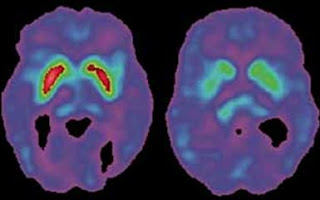When most people reach for a pen, their body acts in one smooth and controlled movement. This is because the instant a person thinks of grabbing the pen, a series of nerve cells fire in an orchestrated sym- phony from the brain to the muscles responsible for that action. For the movement to be precise and smooth, all the nerve cells in the “grabbing-the-pen network” must function properly, including cells that tell unneeded muscles to stay still. In Parkinson’s dis- ease, the brain cells responsible for keeping unneed- ed muscles from moving degenerate and die. This results in progressively more dramatic and uncon- trolled movements, tremors, and spasms. To date, there is no cure for Parkinson’s disease because no one has figured out a way to bring back the special- ized nerve cells that have died.
Are the Promises of Stem Cell Therapies Realistic?
The list of medical achievements stem cells could offer seems to be expanding at an incredible pace. The role of stem cells in medicine is already very real, but there is a danger of exaggerating the promise of new medical developments. What tend to be “over-promised” are not only the potential out- comes of both embryonic and adult stem cell research, but also the time scales that are involved.
The basic research needed to develop viable thera- peutic options is a lengthy process that may extend over many years and decades. Even after science has moved from basic research to developing med- ical applications, it still takes many years to thor- oughly test those applications and demonstrate that they are safe to prescribe for patients. This is true for all medical treatments, including the development of new drugs, procedures, and medical equipment, and is not specific to the living cell therapies made possible by stem cell research.
There are also many legal and social questions that must be addressed before stem cell-based therapies become clinically available. Legal issues that will affect stem cell applications include how to address intellectual property concerns and how to apply and enforce diverse and sometimes conflicting state and national laws. Social issues include concerns about the destruction of embryos, the distribution of the benefits of the research, and the protection of both physical and privacy interests of egg and sperm donors and clinical research subjects.
Because Parkinson’s disease results from the loss of one specific type of nerve cell, stem cells offer a very tangible possibility for treatment. Researchers have recently learned how to differentiate embryonic stem cells into the specific type of brain cell that is lost in Parkinson’s disease. They have also success- fully transplanted adult nerve stem cells into rat brains. When this technique is proven to be effec- tive and safe, transplantation of stem cells into the brains of patients may one day allow doctors to reverse the burden of Parkinson’s disease and restore control of movement. Another strategy cur- rently under study is the addition of chemicals or growth factors that aim to induce the patient’s own stem cells to repair the damaged nerves without
needing to grow and transplant stem cells.
Tuesday, 16 July 2013
Subscribe to:
Post Comments (Atom)

0 comments:
Post a Comment